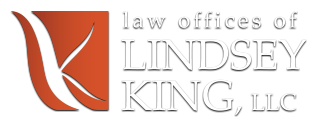May 29, 2020
The SBA published its PPP Loan Forgiveness application and additional guidelines on forgiveness qualifications in the last two weeks. In true pandemic fashion, this week the House passed legislation that – if signed into law – would change the rules again for the PPP – potentially increasing the covered period for proceed usage (from 8 to 24 weeks) and softening the 75/25 rule of payroll/non-payroll costs to 60/40. This Payroll Protection Flexibility Act now goes to the Senate – so stay tuned.
For now, we can only address what we do know. The forgiveness application itself is a comprehensive document, complete with multiple pages of definitions and cross references. Some will find it straight forward, while other may need to consult additional resources – referenced in the application form – to determine which scenarios, calculations, terms, etc. apply to them. One very helpful page of the application is a list of the documents a loan recipient needs to provide with the forgiveness application. If I were preparing my forgiveness application, I would actually skip ahead to that page first, as these records will contain much of the information needed to complete the application. You’ll also want to have on hand your application or loan document to reference your assigned SBA number and exact loan amount issued.
Turning now to the guts of the application, this is where the Treasury’s published guidelines are somewhat helpful. While much of the PPP loan program – including allowable uses and forgivable amounts – was straightforward, some still had lingering questions until the most recent in this series of publications.
For example, many employers laid off, furloughed, or reduced hours of their employees. Then, in an effort to comply with PPP forgiveness requirements, they attempted to restore those same employees who, in turn, declined to return to work. This scenario left employers wondering if they would hold the bag for the employees’ choices?
Another lingering question was how to determine which non-payroll costs (like rent) could be included. Was it the rent that was due before receiving the PPP loan or the rent you paid during your PPP loan? Like always, the answer to both of these questions – as well as many others PPP loan recipients might have – are individualized.
However, I don’t want you guys to say I never gave you anything…
In the first scenario, in general, if an employer tried to restore an employee who they previously furloughed or laid off, and the employee declines to return, that likely will not count against the employer for PPP loan forgiveness purposes (but of course your individual situation should be evaluated).
For the second topic, the SBA has also indicated that there is some flexibility on items such as rent payments that would qualify for forgiveness: you may be able to claim both those paid and incurred, which means for some loan recipients they may be able to include an additional month of rent payment. As always please check with your accountant and or legal advisor to confirm.
So, when should you apply for your PPP Forgiveness? All together now, it depends.
Any loan proceeds you want forgiven need to first be used – in other words, you can’t claim forgiveness before the proverbial check has been paid. What about that “covered period”? Isn’t that my deadline to apply? Nooooo…. the covered period is when your payroll and non-payroll costs must be paid, or incurred (it depends (should I come up with some catchy slang for this? Hmmmm…)). Back to forgiveness “deadlines,” while there may be – in some cases – deadlines, the end of your “covered period” isn’t a magical end date. Rather, you’ll want to apply for forgiveness once both the proceeds are used AND you feel confident your forgiveness application is properly prepared. Once those things are set, waiting will only allow more interest to accrue, and rumor has it review of the forgiveness applications may take 60 days or longer, especially if the SBA wants to review the application. This also needs to be balanced with keeping an eye on this new legislation; if it passes and the new terms are more favorable to your business, waiting for the new application (that I presume would follow) may make sense.
The PPP Forgiveness application is available here. Past blog posts on the topic are also available here and here. Consistent with the constant roller coaster of this pandemic, this is an evolving topic We will keep an eye on the Paycheck Protection Flexibility Act and provide an update once there is clarity on this topic. In the meantime, if you are looking for support or guidance in either using your PPP loans, the forgiveness application, or a combination of them, you may be interested in our PPP Loan Support Services. Contact me if I can help.
| IMPORTANT DISCLAIMERS: 1. The information above does not constitute legal advice, nor does it create an attorney-client relationship. Please consult your attorney with specific questions. 2. As this situation is constantly changing, we will make every effort to stay current on this topic, however this information is provided as general guidance and may not apply to your situation, nor should it be relied upon exclusively. Please consult and confirm with your attorney if you have questions about these updates or their applicability. 3. In some jurisdictions this communication/website might constitute legal advertising. The choice to hire an attorney who is right for your business should not be made based solely upon advertisements. If you would like to learn more about our firm, please click here to learn about our firm and how to contact us. |
Copyright © *2022* *Law Offices of Lindsey King*, All rights reserved.*
Copyright © *2022* *Law Offices of Lindsey King*, All rights reserved.*
